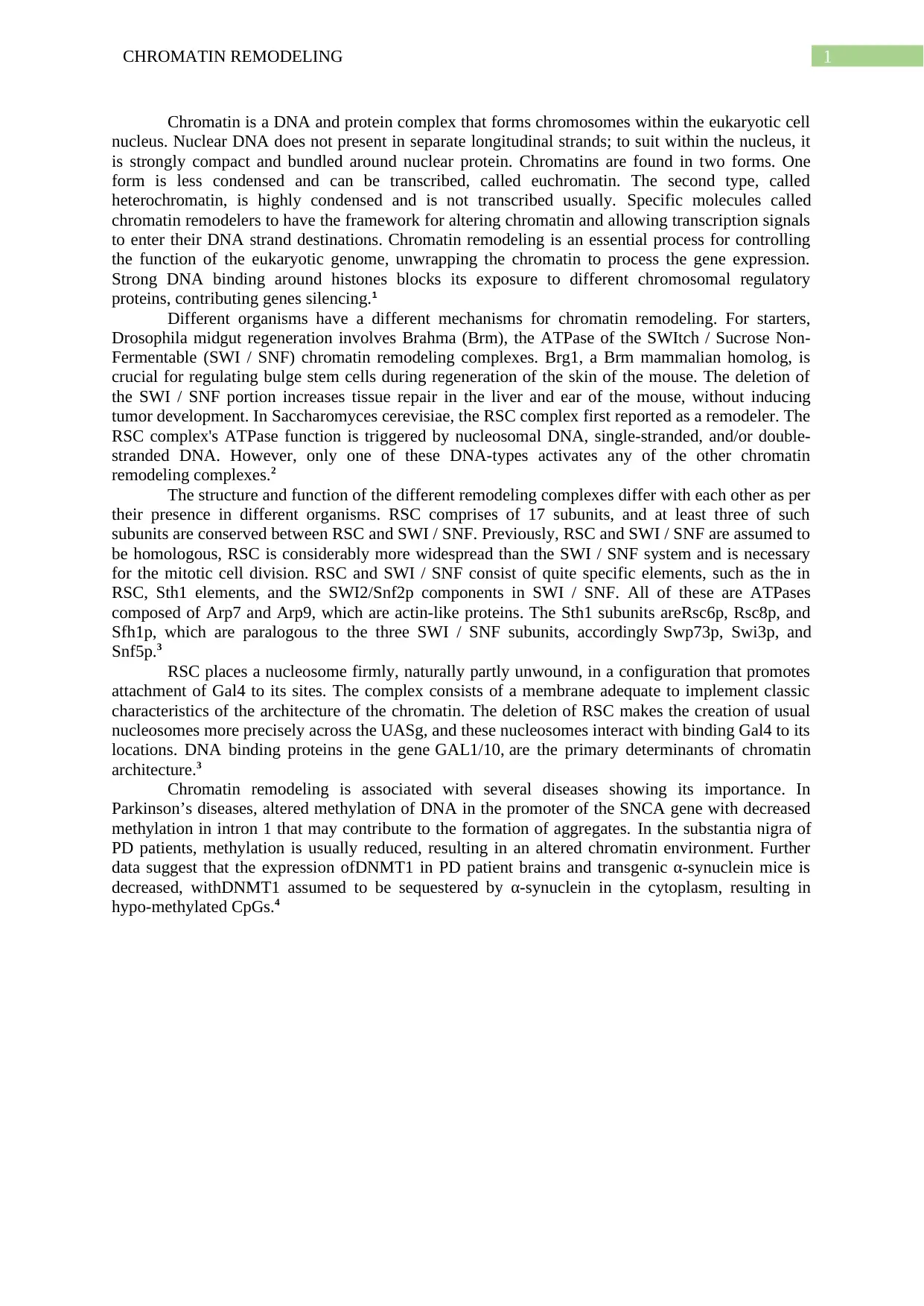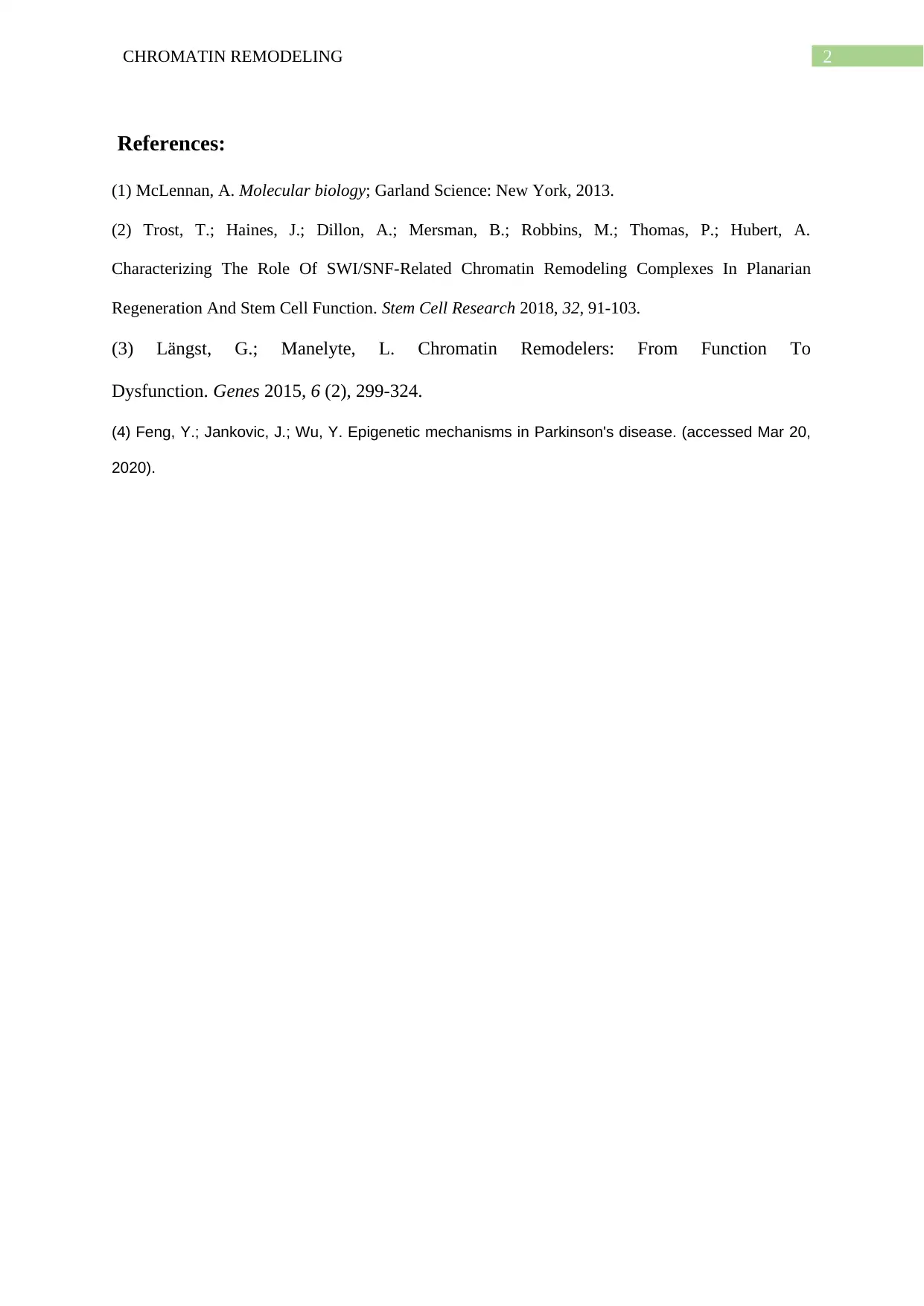Chromatin Remodeling: An Essay on Biology, Function, and Diseases
VerifiedAdded on 2022/08/26
|3
|756
|22
Essay
AI Summary
This essay provides a comprehensive overview of chromatin remodeling, a fundamental process in eukaryotic cells that controls gene expression by altering the structure of chromatin, a complex of DNA and proteins. The essay details the role of chromatin remodelers, specific molecules that modify chromatin structure, enabling or inhibiting transcription. It explores various mechanisms of chromatin remodeling in different organisms, including the involvement of complexes like SWI/SNF and RSC. The essay also highlights the clinical significance of chromatin remodeling, particularly its association with diseases like Parkinson's disease, where altered DNA methylation and chromatin environment contribute to disease pathogenesis. The essay also covers the function of chromatin remodelers, the structure and function of the different remodeling complexes differ with each other as per their presence in different organisms.
1 out of 3








![[object Object]](/_next/static/media/star-bottom.7253800d.svg)